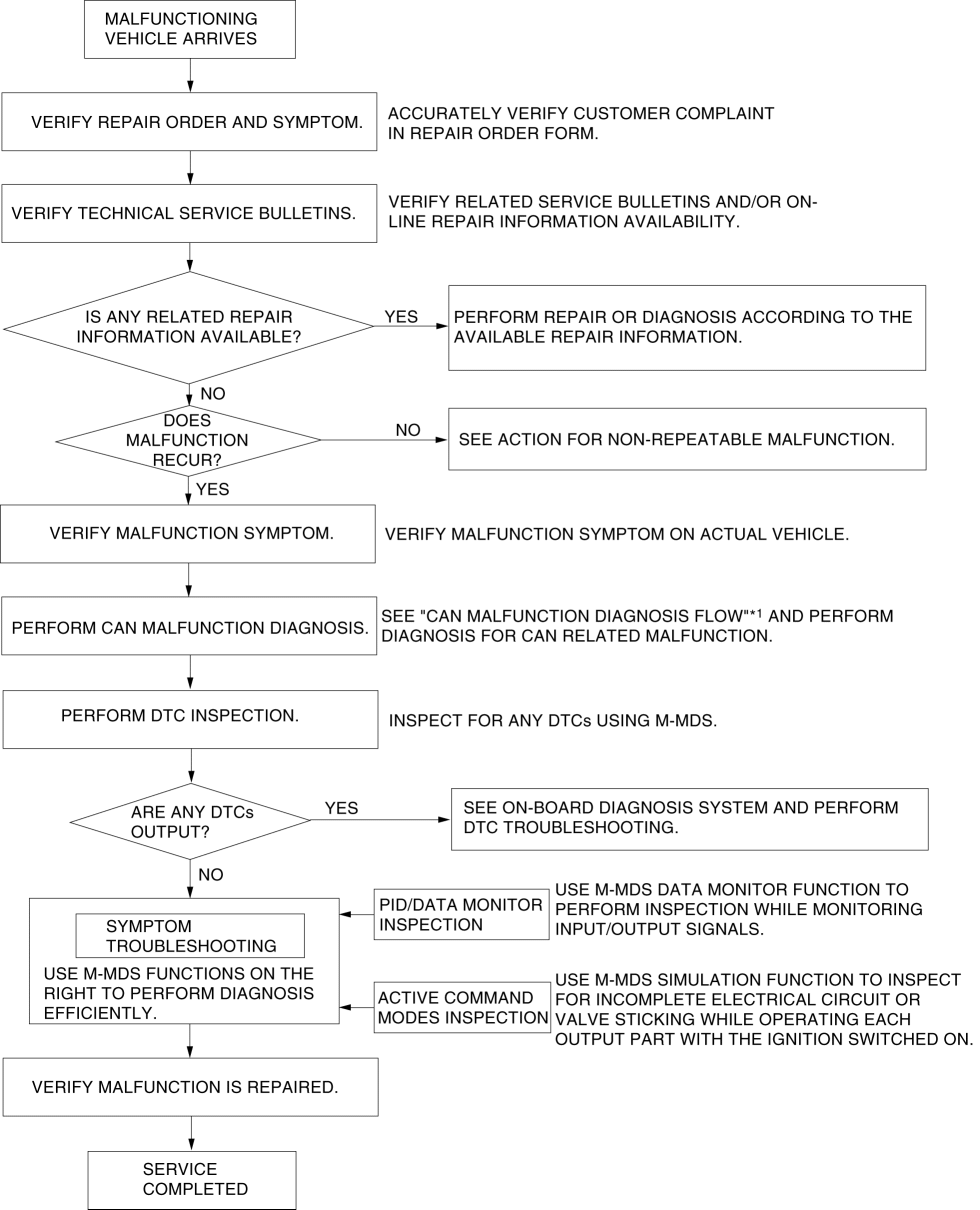
If there is any vehicle malfunction complaint lodged by a customer, perform malfunction diagnosis according to the troubleshooting procedure.
If the malfunction does not recur, verify the malfunction cause by performing the following actions:
Based on the repair order form, attempt to drive the vehicle or perform tests to replicate the malfunction, record the data at that time, and detect the malfunction cause.
Shake the wiring harness or connector of the electrical component which is suspected to be the cause of the malfunction, and inspect for malfunction or occurrence of any DTCs.
Inspect the female terminals on the connector of the electric component which is suspected to be the cause of the malfunction for poor connection.
When the BSM OFF indicator light is flashing (BSM malfunction is detected by its on-board diagnostic function), perform the On-board Diagnostic Inspection. To inspect the DTC, follow the DTC Inspection steps. (See DTC INSPECTION [BLIND SPOT MONITORING (BSM)].)
Before performing the steps in Symptom Troubleshooting, perform the On-board Diagnostic Inspection. To inspect the DTC, follow the DTC Inspection steps. (See DTC INSPECTION [BLIND SPOT MONITORING (BSM)].)
When performing an asterisked (*) troubleshooting inspection, shake the wiring harness and connectors while performing the inspection to discover whether poor contact points are the cause of any intermittent malfunction. If there is a problem, inspect to make sure connectors, terminals and wiring harnesses are connected correctly and undamaged.
The Blind Spot Monitoring (BSM) System is a warning device which monitors the vehicle's rear on both sides for approaching vehicles using radar emitted from the BSM control module the radar reflects off a vehicle that enters a warning zone and is then transmitted back to the BSM control module.
WARNING:
The BSM is not a substitute for the driver in confirming safety. The driver is responsible for assuring the safety of lane changes and other maneuvers. Do not rely completely on the BSM and always confirm the safety around the vehicle visually before changing lanes.
Dirt, ice or snow adhering to the areas near the BSM control module could obstruct the radar and prevent the system from adequately or completely detecting a target vehicle. Always pay attention to the direction in which the vehicle is traveling and the vehicle’s surroundings.
Do not block the area around the BSM control module on the rear bumper with foreign matter (such as bumper stickers) so as not to affect the BSM’s functions.
Always have the BSM control module inspected at an Authorized Mazda Dealer if any shock or impact has occurred in the rear bumper area, even that from a minor accident. Otherwise, the BSM may not operate correctly.
The BSM may not operate normally under the following conditions:
Dirt, ice or snow is adhering to the rear bumper surface.
The vehicle is driven in heavy rain or snowfall, or under conditions where water on the road is sprayed by the vehicle.
The vehicle accelerates from a standing-start with a target vehicle alongside.
A target vehicle moves laterally from a lane two lanes over to the adjacent lane.
The difference in vehicle speed between the vehicle and a target vehicle is higher with the target vehicle passing through the alert area in a very short period.
On a steep incline, or if there is a difference in height between lanes.
Although the system may detect objects on the road side such as parked vehicles or guardrails and operate the warning light/beep, it does not indicate a malfunction.
The BSM control module may not detect all types of vehicles. In particular, detection of the following types of vehicles may not occur:
A vehicle driving at a low speed
Small vehicles such as motorcycles
Vehicles with body shapes that may not reflect radar such as unloaded trailers
Vehicles with lower body height
On a road with a narrower lane width, the system could detect vehicles on a lane next to the adjacent lane and cause the warning light/beep to operate. On a road with a wider lane width, the system may not detect vehicles on the adjacent lane and may not operate the warning light/beep.